How to Grow Brussels sprouts
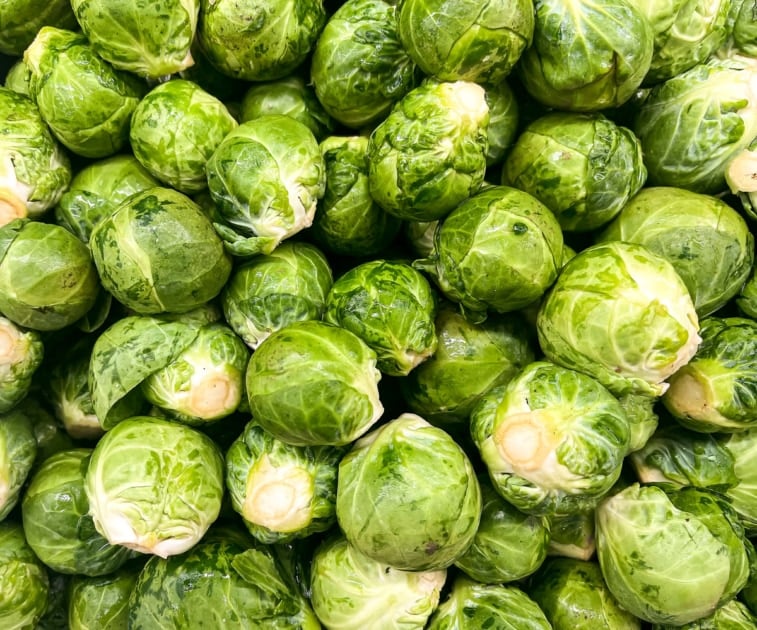
Brussels sprouts can be easy to grow. The trick is sowing seeds so that buds will develop after the mid to late summer heat is over. To do this, it’s recommended to plant seedlings around the start of summer so they will mature in the cool weather, ready for fall or early winter harvest. Here is an easy guide that shows you how to grow Brussels sprouts like a professional.
Getting Started: Two Methods
1) Indoor Preparation & Transplanting
Transplanted Brussel sprout plants tend to have better results than direct seeding. In either case it is very important to prepare the soil weeks before planting seeds. (See below.)
- Sow seeds in May or early June. Then transplant into the garden in late June into early July.
- Plant seedlings 15 to 18 inches apart in rows that are 36 inches apart.
2) Planting Seed Outdoors
- Direct seeded Brussels sprout plants will need about three more weeks than transplants to develop, so calculate approximately four months back from your local average frost date in the autumn. You want to make sure that you time it so that your Brussels sprouts will bud during cooler months.
- Place three seeds together about a quarter inch deep, 18 inches apart.
- Thin to one seedling per 18 inches once seedlings are established.
Water
Plants will need at least an inch of water weekly to develop the best crop and lessen stress during the summer heat.
Soil
Well-drained, fertile soil with a slightly acidic pH of 6.2 to 6.8. Here’s how to check the pH of your soil. Work compost or other organic matter such as leaves and grass clippings into the planting bed several weeks before planting.
Light
Brussels sprouts prefer full sun, but can tolerate some shade.
Fertilizer
- Soil with compost added prior to planting may provide enough nutrients for the growing season. If growth slows, work in more compost around the plants.
- Brussels sprouts need more nitrogen in the soil for the best sprout production. Compost is a natural source of nitrogen.
- Boron, a micronutrient, is also necessary for good sprouts. Some fertilizers will contain boron, but an easy method to add boron to the garden is to mix one tablespoon of borax to five quarts of water and sprinkle it over the ground, covering about 10 square feet per quart of solution.
Common Diseases & Pests
Black rot, alternaria, cabbage worm, cabbage looper, flea beetle, aphids, cutworms.
- Summer-weight row covers can help protect seedlings from insects.
Maintenance
- Brussels sprouts plants can grow as tall as three feet (36 inches) tall. Stakes may be used to support their growth.
- Remove yellow leaves, especially at the bottom of the plants, to allow for sunlight to reach the stalks.
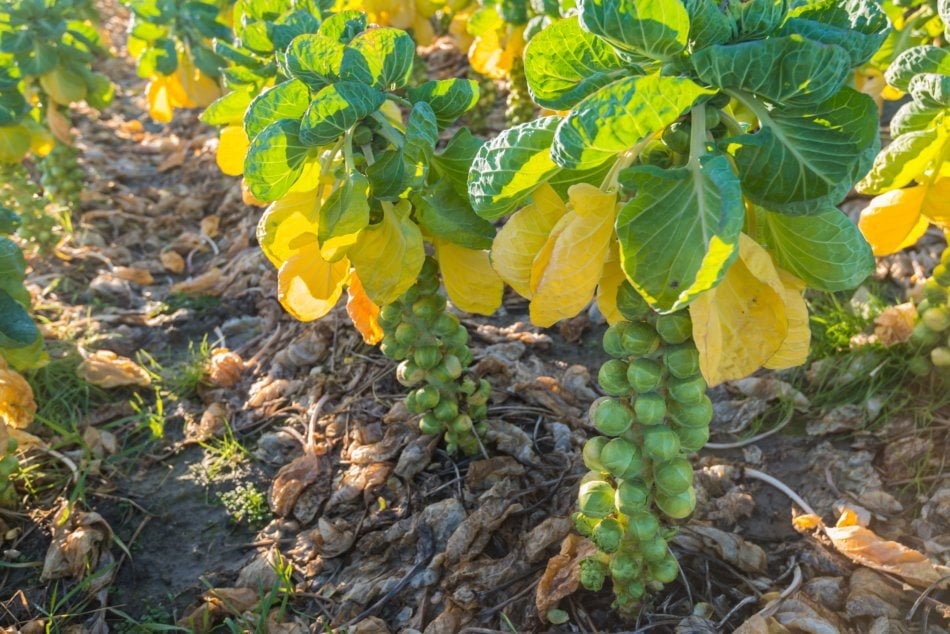
Harvesting
- Brussels sprouts require a fairly long growing season (80-100 days) and are considered to be a cool-season crop.
- Sprouts are ready to harvest when they are firm to the touch and one to two inches in diameter.
- To remove the sprouts from the stalk, snap off the leaf below the sprout and then break off the sprout.
- To encourage earlier growth for sprouts at the top of the stalk, cut the very top of the plant off (called the terminal bud) when the lowest sprouts on the stalk are near an inch in diameter. If you choose to leave the top on the plant, harvest the larger sprouts at the bottom of the stalk first while leaving the smaller ones at the top to develop.
- For best flavor, harvest sprouts after the first frost. Plants can be left in the garden down to 20 degrees Fahrenheit.
- If the plants are topped (you cut the tops off) the entire stalk can be cut and stored up to five weeks at around 36 degrees. Just be sure to remove the leaves.
Additional Notes
- Brussels sprouts are best planted in summer and harvested in fall. As a member of the Cole family (similar to the cabbage family), the plant produces a tastier crop in the cool of the autumn.
Have you tried growing Brussels sprouts before?
What are some challenges that you faced?
Let us know in the comments below!
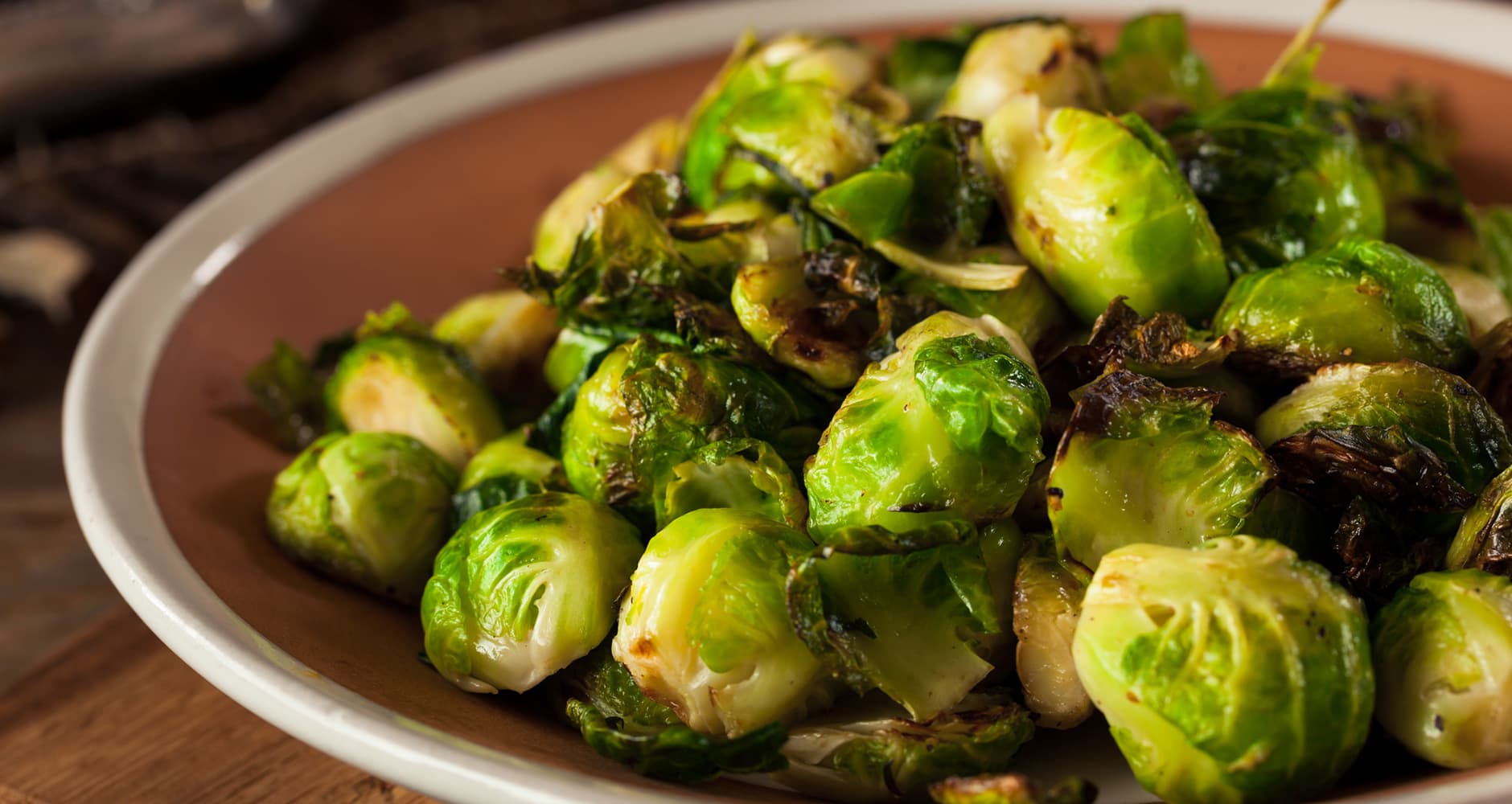

Janine Pineo
Janine Pineo has been gardening all her life in Maine and writing about it for more than two decades. More of her writing can be found on her website, GardenMaine.com.



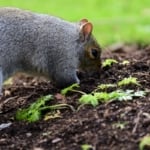

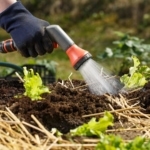
I started mine in an aero garden about 3 weeks ago & they haven’t germinated yet.
I started plants indoors.Transplanted them. Fertilized once but no Brussels appeared until frost. They didn’t form completely.
I’ve tried for 2 years to get my sprouts to develop properly. They start just fine but later lose their compact sprout nature and very quickly develop into a mini plant on the mother plant. What am I doing wrong?
I tried to grow in the early spring…beautiful huge plant the cabbage worms enjoyed them. It’s been a few years and I am trying again for fall sprouts. I’m just sprouting in the cell pack now I hope to add them to my garden in a few weeks?
Good luck! The one thing about gardening is sometimes you’re totally in nature’s good or bad grace! Hope it works!
Wild turkeys love them. Did not get a chance to harvest.
Really? What a bummer!
I love you better than ………..hmm…….Brussels Sprouts. This from an old TV commercial.